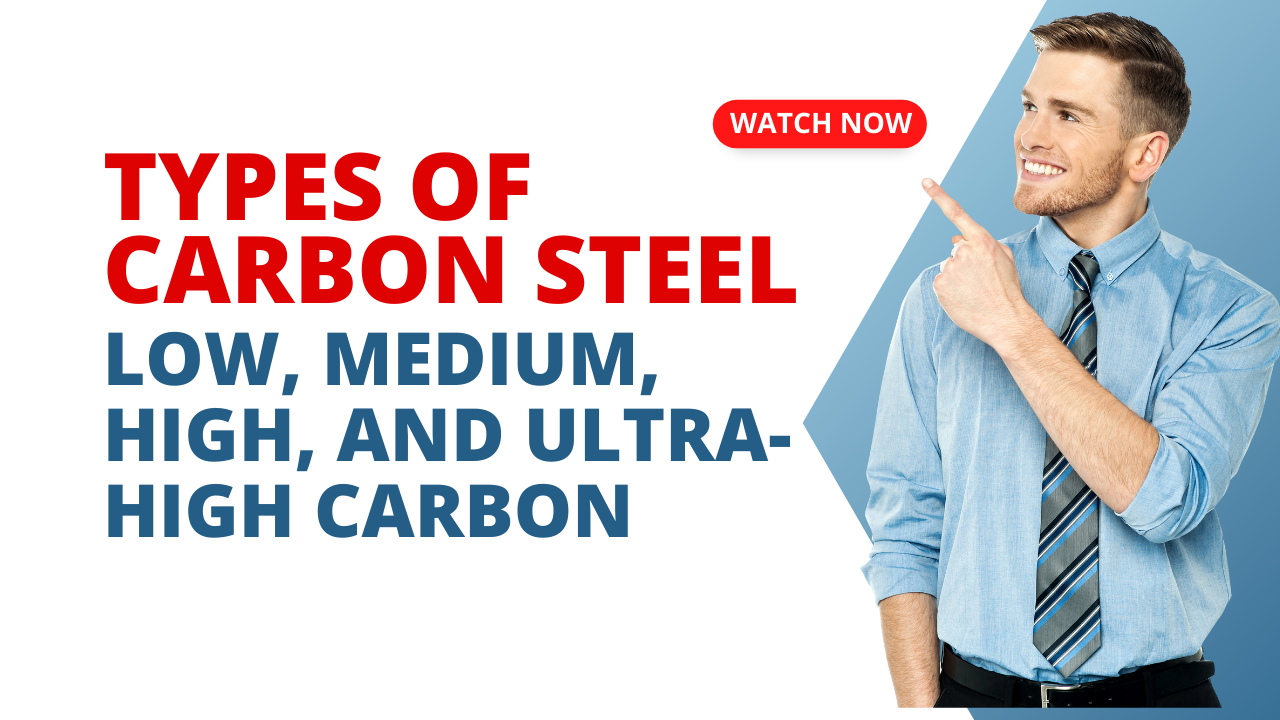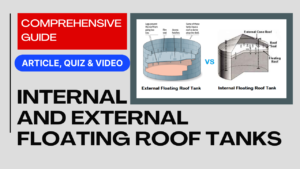Introduction
When it comes to the world of metallurgy, carbon steel stands as one of the most essential and versatile materials. Carbon steel, renowned for its durability and strength, comes in a variety of types, each with unique characteristics that suit different applications. In this informative article, we will delve into the fascinating world of carbon steel, exploring the distinct properties and uses of low, medium, high, and ultra-high carbon steel. Check Out Stainless Steel here.
Table of Contents
Types of Carbon Steel: Low, Medium, High, and Ultra-High Carbon
Carbon steel can be broadly categorized into four main types: low, medium, high, and ultra-high carbon steel. These types vary in their carbon content and subsequent properties, making them suitable for a wide range of industrial applications.
Low Carbon Steel
Low carbon steel, also known as mild steel, is characterized by its relatively low carbon content, usually ranging from 0.05% to 0.25%. This results in a material with excellent weldability and formability, making it a popular choice for construction and manufacturing. Its relatively low strength and hardness are counterbalanced by its affordability and versatility.
Don’t miss the Complete Course on Piping Engineering: Check Now
By EPCLand.com
Applications of Low Carbon Steel
- Construction: Used in building components such as beams, plates, and structural elements due to its easy workability and strength.
- Automotive: Widely employed in manufacturing car bodies, frames, and panels due to its formability and corrosion resistance.
- Pipes and Tubes: Found in various plumbing and piping applications, thanks to its resistance to stress and vibration.
- General Manufacturing: Used to create a wide array of everyday items like nails, screws, and household appliances.
Medium Carbon Steel
Medium carbon steel contains a higher carbon content, typically ranging from 0.25% to 0.60%. This increased carbon content enhances the material’s hardness and strength, making it suitable for applications that require greater durability.
Characteristics of Medium Carbon Steel
- Strength: Medium carbon steel offers better strength compared to low carbon steel, making it suitable for load-bearing structures.
- Machinability: While it is harder to machine than low carbon steel, it retains reasonable machinability for various manufacturing processes.
Applications of Medium Carbon Steel
- Railways: Used in the construction of rail tracks and components due to its strength and resistance to wear.
- Gears and Shafts: Commonly employed in the production of gears, shafts, and machinery parts that require high strength and toughness.
- Automotive Parts: Found in components like crankshafts and axles, where strength and durability are paramount.
- Forging: Medium carbon steel’s properties make it ideal for various forging applications.
High Carbon Steel
High carbon steel is characterized by its carbon content ranging from 0.60% to 1.00%. This type of carbon steel offers exceptional hardness and wear resistance, making it suitable for specialized applications.
Properties of High Carbon Steel
- Hardness: High carbon steel is renowned for its hardness, making it ideal for cutting tools and blades.
- Brittleness: While highly durable, high carbon steel can be brittle, necessitating careful handling and tempering.
Applications of High Carbon Steel
- Cutting Tools: Widely used in the production of drills, saw blades, and cutting implements due to its exceptional hardness.
- Springs: High carbon steel’s ability to withstand repeated stresses makes it a prime choice for springs in various industries.
- Ball Bearings: Its hardness and wear resistance render high carbon steel suitable for manufacturing ball bearings.
- Railway Wheels: Used for railway wheels due to its strength and impact resistance.
Ultra-High Carbon Steel
Ultra-high carbon steel contains a carbon content ranging from 1.00% to 2.00%. This extreme carbon content results in a material with unparalleled hardness and strength.
Characteristics of Ultra-High Carbon Steel
- Hardness: Ultra-high carbon steel is incredibly hard and abrasion-resistant, making it suitable for demanding applications.
- Limited Weldability: Due to its high carbon content, welding ultra-high carbon steel can be challenging.
Applications of Ultra-High Carbon Steel
- Industrial Cutting Tools: Used for industrial knives, cutting tools, and shears that require exceptional hardness and edge retention.
- Chisels and Blades: Ultra-high carbon steel’s hardness makes it perfect for chisels, razor blades, and scalpels.
- Surgical Instruments: Due to its superior edge retention, it’s employed in manufacturing surgical instruments.
- High-Strength Wire: Ultra-high carbon steel is utilized in producing high-strength wire for various applications.
Frequently Asked Questions (FAQs)
Is high carbon steel more brittle than low carbon steel?
No, high carbon steel is not necessarily more brittle than low carbon steel. While high carbon steel can exhibit brittleness, proper heat treatment and tempering can enhance its toughness and reduce brittleness.
Can you weld high carbon steel?
Yes, high carbon steel can be welded, but it requires careful consideration and control of the welding process to avoid issues such as cracking and brittleness.
What is the main advantage of using ultra-high carbon steel?
The main advantage of using ultra-high carbon steel is its extreme hardness and wear resistance, making it suitable for applications that require cutting, shearing, and precision.
Are there any disadvantages to using low carbon steel?
While low carbon steel offers excellent weldability and formability, it lacks the strength and hardness of higher carbon steel types. This can limit its use in applications that demand higher load-bearing capacity.
Can medium carbon steel be hardened?
Yes, medium carbon steel can be hardened through heat treatment processes such as quenching and tempering. This enhances its strength and durability for various applications.
What industries commonly use ultra-high carbon steel?
Ultra-high carbon steel finds applications in industries such as manufacturing, construction, healthcare (surgical instruments), and specialized cutting tools.
Conclusion
Understanding the various types of carbon steel—low, medium, high, and ultra-high—is crucial for selecting the right material for a specific application. Each type possesses unique properties that cater to different needs across industries. From the malleable and versatile low carbon steel to the extremely hard and wear-resistant ultra-high carbon steel, the world of metallurgy offers a diverse range of options that enable innovation and progress across countless fields.
Recommended courses (Published on EPCLand):
- Basics of Piping Engineering
- Piping Layout Engineering
- Piping Material Engineering
- Piping Stress Analysis
- Complete Course on Piping Engineering
- Material Requisitions
- Piping Material Specifications
- Valve Material Specifications
Related Video
Attempt Quiz
Question 1:
Which type of carbon steel contains a carbon content ranging from 0.05% to 0.30%?
Explanation: Low Carbon Steel contains a carbon content ranging from 0.05% to 0.30%. It is characterized by good ductility and weldability but lower strength compared to higher carbon steels.
Question 2:
Which type of carbon steel is commonly used for applications requiring higher strength and hardness?
Explanation: High Carbon Steel is commonly used for applications requiring higher strength and hardness due to its higher carbon content, which ranges from approximately 0.60% to 1.0%.
Question 3:
Which type of carbon steel is known for its excellent hardness and wear resistance?
Explanation: Ultra-High Carbon Steel, also known as Spring Steel, is known for its excellent hardness and wear resistance. It contains a very high carbon content, often exceeding 1.0%.
Question 4:
Which type of carbon steel is suitable for applications requiring moderate strength and hardness?
Explanation: Medium Carbon Steel is suitable for applications requiring moderate strength and hardness. It has a carbon content ranging from approximately 0.30% to 0.60%.
Question 5:
Which type of carbon steel is most suitable for deep hardening and heat treatment?
Explanation: High Carbon Steel is most suitable for deep hardening and heat treatment processes, making it a preferred choice for applications where increased hardness and wear resistance are required.



